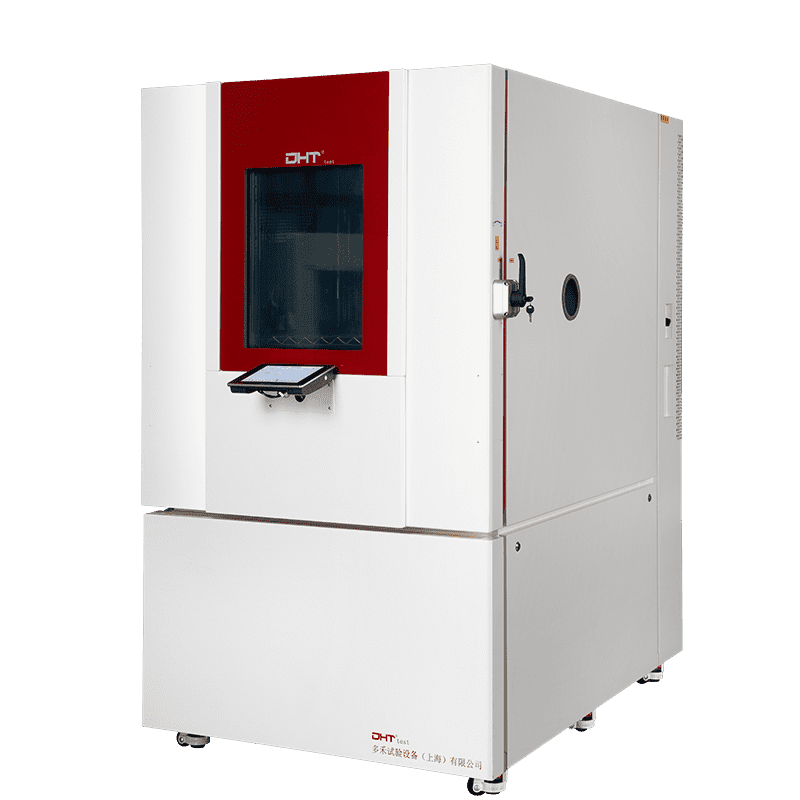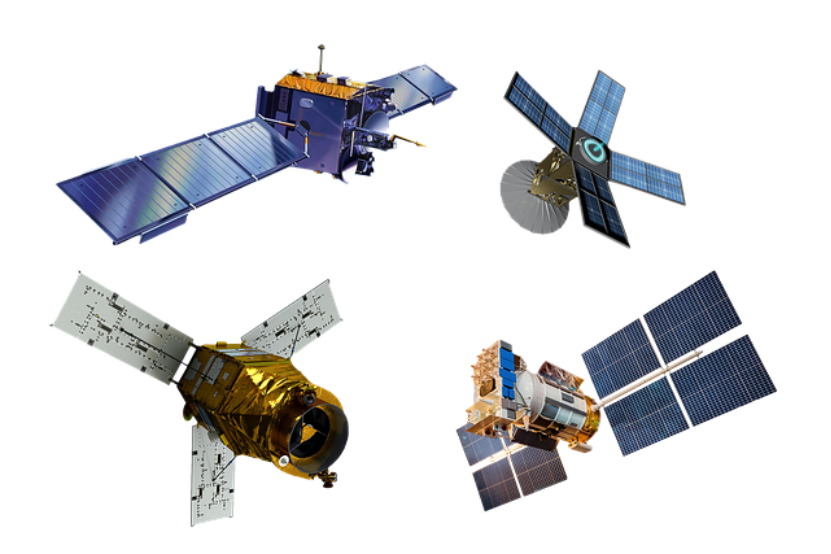Geschrieben von Robin
Leitender Ingenieur, Doaho Test (DHT®)
In der Luft- und Raumfahrt sowie in der Halbleiterfertigung müssen Produkte oft den härtesten Umweltbedingungen standhalten, die man sich vorstellen kann - extreme Höhenlagen, tiefes Vakuum, hohe und niedrige Temperaturschwankungen und intensives Thermalcycling. Um diese Bedingungen zu simulieren und sicherzustellen, dass Komponenten unter realen Belastungen zuverlässig funktionieren, sind Vakuumtestkammern zu einem unverzichtbaren Bestandteil im Produktentwicklungs- und Validierungsschema geworden.
Eine Vakuumkammer, die stabile Leistung, präzise Parameterkontrolle und die Einhaltung der relevanten Industriestandards bietet, erleichtert nicht nur beschleunigte Alterungs- und Materialkompatibilitätstests, sondern verbessert auch die Effizienz Ihrer F&E-Prozesse und steigert Ihre Qualitätssicherungsfähigkeiten. Dieser Artikel untersucht, wie man eine professionelle Vakuumkammer auswählt, die auf die strengen Anforderungen der Validierung in der Luft- und Raumfahrt sowie der Halbleiterindustrie zugeschnitten ist, und behandelt Anwendungsszenarien, kritische Spezifikationen, Konfigurationsstrategien, Normenkonformität und beste Wartungspraktiken. have become indispensable in product development and validation workflows.
A vacuum chamber that delivers stable performance, precise parameter control, and compliance with relevant industry standards doesn’t just facilitate accelerated aging and material compatibility tests—it also enhances the efficiency of your R&D processes and upgrades your quality assurance capabilities. This article explores how to choose a professional-grade vacuum chamber tailored to the rigorous demands of aerospace and semiconductor validation, covering use-case scenarios, critical specifications, configuration strategies, standards compliance, and maintenance best practices.
Why Are Vacuum Test Chambers Essential for Aerospace and Semiconductor Applications?
-
Aerospace: Validating for Orbit and Beyond
In the development of spacecraft, satellites, and unmanned aerial systems (UAS), hardware must pass a series of qualification tests that simulate extreme environments to ensure in-orbit performance. One of the most crucial testing scenarios is the deep vacuum environment of space—typically requiring pressures below 10⁻³ Pa. Under such conditions, the material outgassing behavior, structural integrity, seal tightness, and thermal stress response all become critical indicators of reliability.
Vacuum test chambers designed for aerospace must not only simulate high-altitude low-pressure conditions but also support thermal-vacuum cycling, known as TVAC testing. These chambers are vital tools throughout the product qualification cycle, helping engineers validate environmental resilience before launch.
-
Semiconductor: Reliability Through Controlled Atmosphere
In semiconductor fabrication and packaging, vacuum environments are equally indispensable. From microchips and MEMS sensors to IC packaging, reliability often hinges on hermetic sealing and the stability of microstructures. Vacuum test chambers are routinely used for post-packaging quality validation, especially during accelerated aging tests prior to shipment.
A controlled vacuum or low-pressure environment helps expose issues like microcracks, poor sealing, or material volatilization, providing accurate insight into potential product failure. For manufacturers aiming at high yields and long-term stability, vacuum chambers play a critical role in ensuring process consistency and defect detection.
Key Technical Specifications to Consider
Before selecting a vacuum test chamber, ensure the following technical attributes align with your specific testing requirements:
1. Ultimate Vacuum Level
-
Aerospace applications typically require ultra-high vacuum capabilities, ranging from 10⁻³ Pa to 10⁻⁶ Pa.
-
Semiconductor packaging and leak testing generally fall within 10⁻¹ Pa to 10⁻³ Pa.
Note: Vacuum levels depend on the pumping system (e.g., rotary vane, dry scroll, turbomolecular pumps) and the sealing integrity of the system. Always match your chamber’s vacuum capability to your application demands.
2. Temperature Control Range
-
Common range: –70°C to +180°C.
-
For aerospace TVAC testing, consider a chamber with heating/cooling plates to simulate solar exposure and eclipse conditions.
-
Temperature stability should be within ±1°C, with verifiable uniformity across the chamber.
3. Chamber Volume and Material
-
Select a chamber size based on your test specimen dimensions; capacities usually range from 50L to over 1000L.
-
The internal liner should be made of 304 or 316 stainless steel to resist corrosion and withstand pressure differentials.
-
Structural strength should be validated through finite element analysis to prevent deformation or leakage during extended cycles.
4. Vacuum Pump System Configuration
-
A reliable setup includes: primary pump + high vacuum pump (turbomolecular or diffusion) + back-pressure control valve.
-
Optional features like N₂ backfill systems can ensure safe pressure equalization post-test.
-
Integrated features such as pump interlock, overload protection, and vacuum leak detection increase system reliability.
Compliance with Testing Standards
Your vacuum chamber must be designed in accordance with the standards relevant to your industry:
-
Aerospace: MIL-STD-810G, ECSS-Q-ST-70-04C, NASA GEVS
-
Semiconductor: JEDEC JESD22-A103 / A113, IPC/SMEMA, ASTM E595
Tip: Prioritize equipment that has third-party certifications such as CE, RoHS, or ISO 17025 for quality assurance.
Safe Operation and Preventive Maintenance
A high-performance vacuum test chamber is a precision instrument, and long-term reliability depends heavily on proper usage and maintenance. Key aspects include:
-
Pump Wartung: Regular oil replacement for rotary pumps, and cooling system checks for dry pumps are essential to maintain performance.
-
Seal Integrity: Check gaskets and seals frequently to prevent micro-leaks that could degrade vacuum quality and test accuracy.
-
Chamber Cleanliness: Outgassed residues from materials can accumulate and contaminate test environments. Routine cleaning extends service life and maintains test integrity.
-
Data Management: Choose systems with USB export or remote monitoring capabilities to simplify data logging and traceability.
-
Training & Support: Work with vendors who offer hands-on training and responsive after-sales service to minimize downtime and prevent user error.
Schlussfolgerung
Industrial
vacuum chambers are far more than just a line item on your equipment list—they’re a critical asset for accelerating product validation and ensuring environmental resilience. Especially in high-stakes fields like aerospace and semiconductors, factors like vacuum accuracy, temperature uniformity, and system durability can directly impact product qualification outcomes.
The DHT® series of vacuum test chambers is purpose-built to meet the exacting standards of advanced R&D environments. With a robust system architecture, customizable configurations, and proven operational stability, DHT® chambers are trusted by research institutes, aerospace contractors, semiconductor fabs, and universities alike.
If you’re seeking high-performance vacuum testing equipment with an excellent cost-to-value ratio, the
DHT®(dhtchamber.com) product line offers reliable solutions tailored to your needs. Let us help you enhance product reliability, shorten time-to-market, and strengthen global competitiveness—one test at a time.
Häufig gestellte Fragen
Wofür werden Vakuumprüfkammern in der Luft- und Raumfahrt sowie der Halbleiterindustrie verwendet?
In der Luft- und Raumfahrt simulieren Vakuumtestkammern Tiefenraum- oder Hochvakuumumgebungen, um die Ausgasung von Materialien, die Dichtheitsintegrität und die thermische Vakuumzyklisierung (TVAC) zu validieren. In der Halbleiterfertigung werden sie zur Lecksuche, zur Validierung der Hermetizität und für beschleunigte Alterungstests verwendet, um die Langzeitzuverlässigkeit von Mikrochips, Sensoren und IC-Verpackungen sicherzustellen.
Welche wichtigen Spezifikationen sollten Sie bei der Auswahl einer Vakuumprüfkammer berücksichtigen?
Kritische Faktoren umfassen das endgültige Vakuumniveau (10⁻³ bis 10⁻⁶ Pa für die Luft- und Raumfahrt, 10⁻¹ bis 10⁻³ Pa für Halbleiter), den Temperaturregelbereich (–70 °C bis +180 °C mit einer Stabilität von ±1 °C), das Kammervolumen und die Konstruktion aus Edelstahl sowie ein zuverlässiges Pumpsystem mit Turbomolekular- oder Diffusionspumpen plus Sicherheitsverriegelungen.
Welche Standards müssen industrielle Vakuumprüfkammern erfüllen?
Für die Luft- und Raumfahrt ist die Einhaltung von MIL-STD-810G, ECSS-Q-ST-70-04C und NASA GEVS wesentlich. Bei Halbleitern müssen Kammern die Protokolle JEDEC JESD22-A103/A113, IPC/SMEMA und ASTM E595 unterstützen. Achten Sie außerdem auf Drittzertifizierungen wie CE, RoHS oder ISO 17025, um die Qualität und Rückverfolgbarkeit der Geräte zu gewährleisten.


